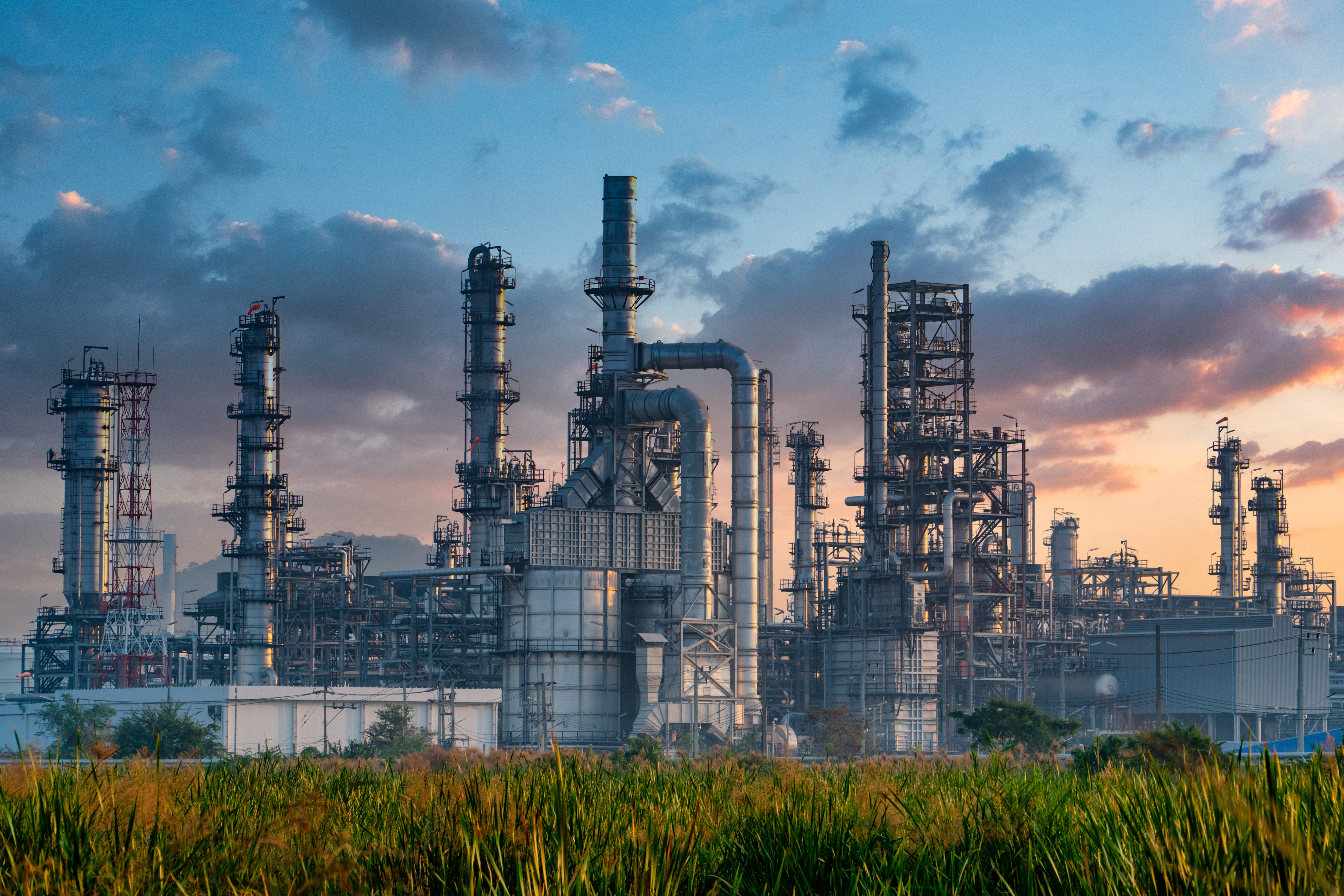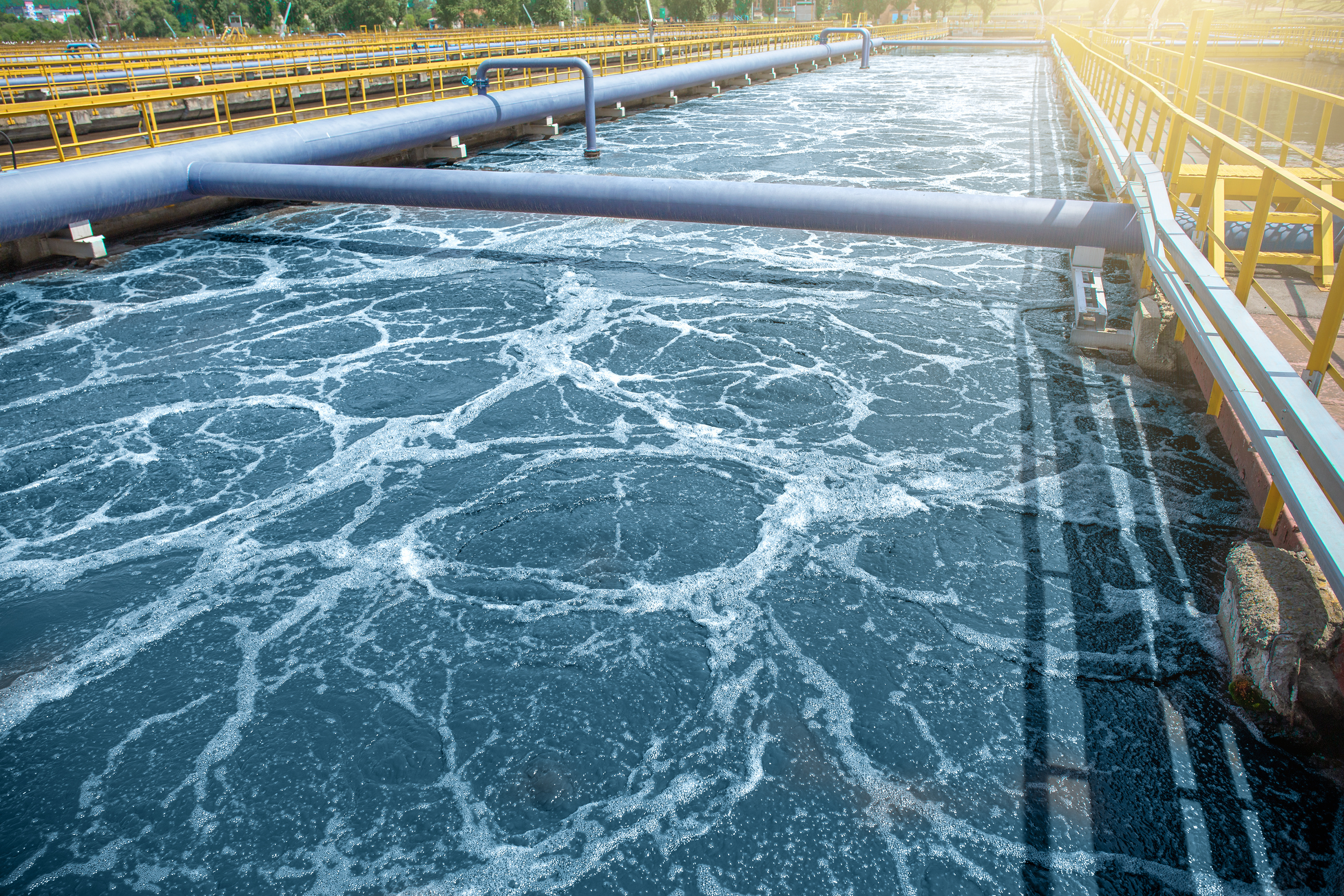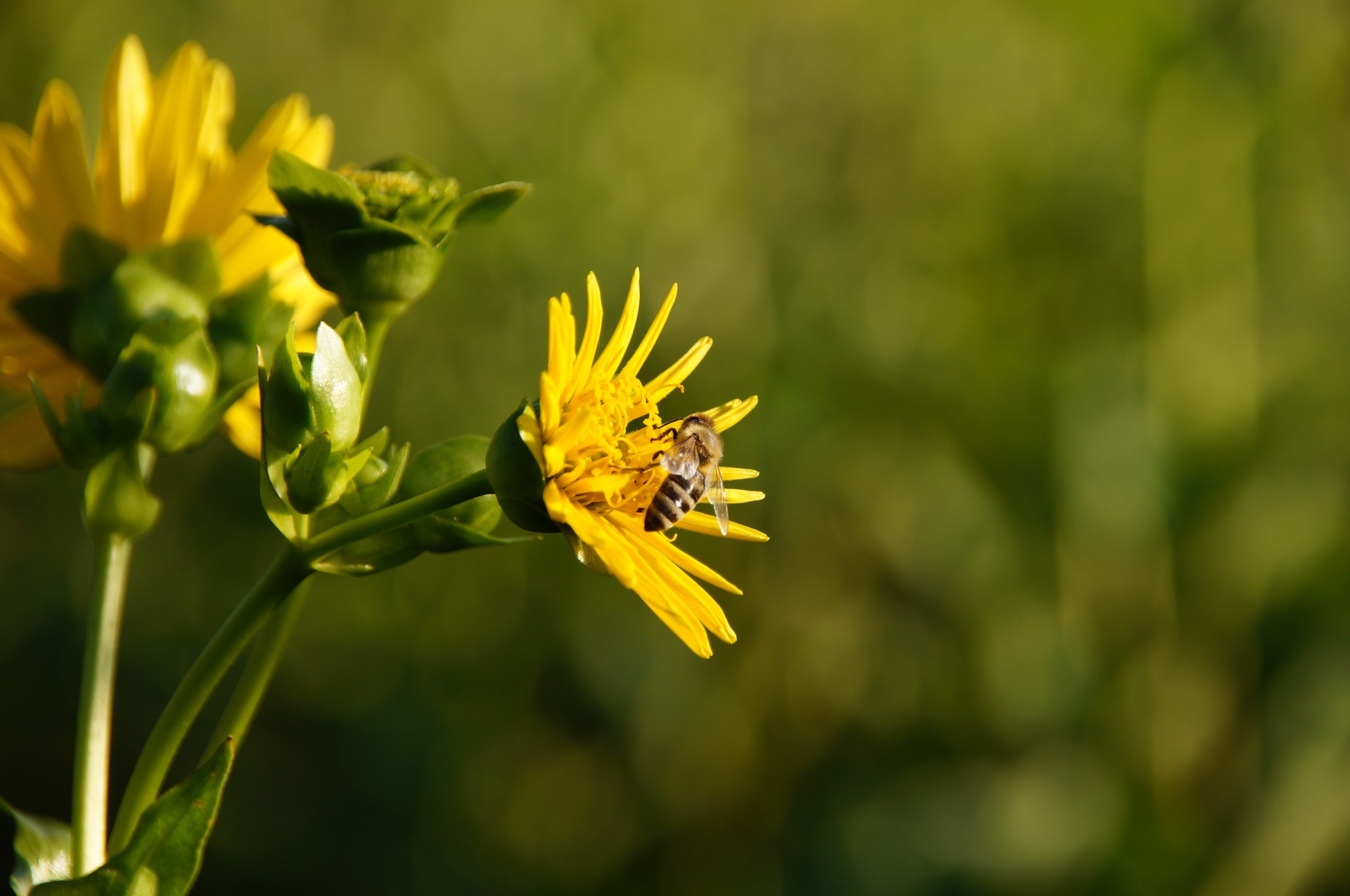Main navigation
Biorefinery: new paths to build our tomorrow
Sustainability is in vogue. And it’s not a question of wanting to be sustainable, but having to be: as the latest report from the Intergovernmental Panel on Climate Change shows, protecting the climate and the environment calls for swift action. Biorefineries that use renewable raw materials and recycle industrial raw materials are playing an increasingly important role in the bioeconomy concepts of many countries - including the state of Baden-Württemberg.
Petroleum is not only an energy source; for more than a century it has also been present in a huge number of things in our everyday lives – be it medicines or more or less vital products such as packaging, textiles, cleaning agents, building materials or cosmetics – and it therefore also guarantees employment for many workers in a major industrial sector, the petrochemical industry. It is thanks to constantly evolving techniques over this long period that we can now manufacture such a wide range of products. This means petrochemical products have an enormous technological lead over sustainable technologies that have only been under development for a comparatively short time.
We cannot do without other fossil raw materials - natural gas and coal - at the moment either, because together with petroleum, natural gas and coal are needed to provide energy, i.e. for electricity, heat and fuels such as diesel, gasoline and kerosene. The German Chemical Industry Association (VCI) states that this sector accounts for more than 80 percent of the overall fossil raw material demand in Germany; less than 20 percent of fossil raw materials are used as materials.1)
The future belongs to natural materials and recycled raw materials
According to the German Federal Institute for Geosciences and Natural Resources (BGR), the oil supply is still secure for more than 50 years, based on today's global oil consumption and taking into account the reserves of at least 244 billion tonnes.2) Although most people would find this reassuring, it is not good for future generations. So time is of the essence; alternatives to fossil fuels are urgently needed. And the issue here isn’t limited to oil reserves: it has long been known that plastics, for example, accumulate in large quantities in the environment. Microplastics, which result from the decomposition of plastics as a result of their brittleness, amongst other things, have become an ecological problem.
It is therefore high time to look for serious sustainable alternatives made from natural and recycled materials. However, it is essential to avoid using crops that are used as food or feed and also to ensure that crops are not grown exclusively for fuel production. Food is already in short supply in many countries, as is arable land.

Against this background, back in 2008, the German government called for a strategy to be developed for the increasing provision of alternatives. A year later, the ‘Federal Government Action Plan for the Material Use of Renewable Raw Materials’3) was adopted. Various fields of action were identified. One included biorefineries as a central theme as they have the potential to use biomass as a diverse source of raw materials with the fullest possible use of all components. In subsequent years, this action plan was expanded with the addition of two comprehensive research strategies4), 5) and supplemented by the 'Biorefineries Roadmap'1) in 2012, in which experts emphasised that "considerable technological advancement and innovation is necessary for biorefinery concepts to be operated commercially and on an industrial scale".
Agreement that biorefinery systems should not be used entirely without caution and prior risk assessment existed even before these strategies were developed: although their main goal is to contribute to a sustainable industry by conserving natural resources, e.g. by using secondary raw material sources and reducing greenhouse gas emissions and other pollutants, the production of biobased products can also lead to environmental damage in the form of land use change or eutrophication of water bodies, for example. It is therefore important to use life cycle assessment (LCA) methods to assess the potential environmental impact of biorefineries in advance and also to establish whether they really are more environmentally friendly than conventional alternatives. An LCA is very much determined by the feedstock, but other aspects such as production processes and energy requirements also play a role when assessing the impact of biorefineries. In this context, one promising approach for the future is something known as a 'green biorefinery', which is designed to extract valuable materials from grass and other green plants such as clover or leaves in a way that is both waste- and emission-free.
Germany at the forefront worldwide
Although the use of renewable and secondary raw materials is still in its infancy compared with its fossil counterparts, it has already made considerable progress in the short period of time that stakeholders have been focusing on it. As experts elucidate in the ‘EU Biorefinery Outlook to 2030’, around 300 biorefineries in the EU already generate sales of several billion euros with biobased products - of which, for example, 2.7 billion euros are generated in the paper and pulp industry alone (figures from the Confederation of European Paper Industries). A total of 4.6 million tonnes of biobased chemicals and materials are currently produced in Europe, and production could increase by a good one to three million tonnes by 2030.7), 8)
The plants are mainly concentrated in the Central European region, especially in Germany, France, the Benelux countries and northern Italy. The two leaders, Germany and France, are already well ahead of China and the USA, which have the largest number of biorefineries outside the EU.
Biorefinery feedstocks are primarily of agricultural origin, followed by forestry, waste and, in comparatively small quantities, marine biomass. They are predominantly used to produce chemicals, followed by other products such as pharmaceuticals, food, feed or cosmetics, and, to a relatively limited extent, fuels.9) Demand for biobased products in the EU in 2030 is expected to be far higher than the projected supply.7)
Biorefinery sites distributed across all of Germany
In Germany, 59 chemical/material biorefineries are currently in operation – including seven in Baden-Württemberg - supplemented by a few more pilot and research plants. Baden-Württemberg is home to virtually all common biorefinery platforms. Examples across Germany include the Biowert Industrie GmbH grass factory in Brensbach, Hesse, which processes meadow grass into green electricity, fertilisers, synthetics and insulating materials, Cargill Deutschland GmbH in Krefeld, where various starches and sweeteners for the food and technical industries are produced from corn, and the biorefinery operated by the Swiss specialty chemicals group Clariant in Straubing, which produces sugar and ethanol from straw and Chinese silvergrass.
One of the German showcase projects currently in the spotlight is the biorefinery operated by Europe's largest paper producer, the Finnish UPM Group, in Leuna. From 2022, chemicals - primarily monoethylene glycol - will be produced here from wood for use in textiles, plastics, medicines and other products. The project was awarded 'The Bio Act of the Year 2020' by the World BioEconomy Forum in 2020. The starting material is regional, certified beech industrial wood; tree parts that cannot otherwise be recycled will also be used, as well as residual materials from sawmills. This will make UPM’s biorefinery the first fully integrated wood-based biorefinery in the world to completely decompose a single type of feedstock, producing multiple intermediates and multiple end products.
Another player from Baden-Württemberg that has also been conducting research at the same location for years is the Fraunhofer Centre for Chemical-Biotechnological Processes CBP - a branch of the Stuttgart-based Fraunhofer Institute for Interfacial Engineering and Biotechnology IGB, which is working on several research projects on the use of sustainable raw materials and opened a lignocellulose biorefinery pilot plant in Leuna back in 2012.
In addition, on the premises of InfraLeuna GmbH, owner and operator of infrastructure facilities at the site of the former Leunawerke, another IGB branch - Straubing-based 'Bio-, Electro- and Chemocatalysis BioCat' - has since 2018 been working on the development of a pilot-scale electrochemical biorefinery as part of the cooperative EU project LIBERATE. The goal of the project carried out by an international consortium is to convert low-cost lignin from wood into high-value biobased chemicals such as vanillin and building blocks for biobased biopolymers by means of an electrochemical process.
Biofactories receive targeted support in Baden-Württemberg

Baden-Württemberg itself is also working at full speed on the biorefinery topic. In 2019, the 'Sustainable Bioeconomy for Baden-Württemberg' strategy was adopted by the Baden-Württemberg government. Among other things, this strategy listed the construction and development of pilot and demonstration plants in rural areas including a major focus on promoting and developing modular biofactories, which is already being implemented in concrete terms. For example, the Baden-Württemberg Ministry for the Environment, Climate and Energy Management has launched the 'Bio-Ab-Cycling: Biorefineries for the recovery of raw materials from waste and wastewater' funding programme providing funds from the European Regional Development Fund (ERDF). This funding programme finances projects aimed at obtaining as many raw materials and products as possible from secondary raw material sources such as waste and wastewater, therefore being able to return the feedstocks efficiently and sustainably to the economic cycle ('cycling'). The strategy also includes the further development of existing biogas plants by, among other things, making the feedstock materials and the product range more variable.10)
A previous feasibility study, which BIOPRO Baden-Württemberg prepared together with experts in 2019, found that - in principle – biowaste had great potential and hitherto untapped resources, both as regards new and already established value creation networks.11) Another feasibility study, carried out by the Fraunhofer Institute for Interfacial Engineering and Biotechnology in cooperation with Umwelttechnik BW, investigated the huge potential of wastewater as a raw material source and showed how raw materials can be successfully recovered with the help of biotechnology.12)
Biorefinery farms contribute to regional sustainability
In another project – 'Biorefinery for the Bioeconomy in Baden-Württemberg (B4B)' - a lignocellulosic biorefinery was set up, operated and evaluated on a representative pilot plant scale.13) With the participation of the Karlsruhe Institute of Technology (KIT), the University of Hohenheim and BIOPRO Baden-Württemberg, an approach was developed to separate the Chinese silvergrass Miscanthus into carbohydrates and a lignin fraction. The resulting sugars were processed in further process steps on a kilogramme scale into basic chemicals for products such as packaging or textiles, and the lignin was processed into phenols for producing plastics.
In a follow-up project in the 2021 science year, this on-farm biorefinery consisting of several modules at the Unterer Lindenhof in Eningen, the University of Hohenheim’s experimental farm, is now to be expanded and further developed for producing chemicals, energy and fertiliser in such a way that the biomass is used as completely as possible. In order to avoid energy- and cost-intensive transport routes, the researchers are also combining a process specially developed at KIT, the bioliq© concept that enables the production of the energy-rich, easily transportable intermediate product, biosyncrude. During the subsequent refining process, biosyncrude is converted into synthesis gas from which a broad range of end products (fuels used for transportation and many platform chemicals) can be produced. However, a biorefinery farm of the future is not intended to cover all process steps itself: the goal is to have decentralised plants that are as small as possible, from which nutrients that are not needed are returned directly to agricultural fields. However, to ensure that these small plants also operate economically, their intermediate products will be further processed in larger factories, thus guaranteeing sustainability at the regional level.
Numerous biorefinery sites in Baden-Württemberg
However, Baden-Württemberg has even more concrete things to offer in this area: the Baden-Württemberg Ministry of Food, Rural Areas and Consumer Protection is promoting the development of biorefinery concepts as a research, innovation and investment priority. To this end, the funding programmes 'Sustainable Bioeconomy as an Innovation Engine for Rural Areas' and 'Bioeconomy Innovation and Investment Programme for Rural Areas (BIPL-BW)' have been launched to fund projects in which different developmental steps including scale-up can be studied. An important starting point is the further development of existing biogas plants into biorefineries that produce several products. Thus, bioenergy villages might in the future also be able to operate decentralised biorefineries and become bioeconomy villages. In addition to promising research and development projects, Baden-Württemberg is home to a number of companies that are already active in the market. Among them is CropEnergies AG, which is part of the Südzucker Group in Mannheim, one of the largest biorefinery companies in Germany with a production capacity of almost 1 million m3 of bioethanol and many hundreds of thousands of tonnes of food and animal feed products per year, plus neutral alcohol and biogenic CO2. In addition to producing marketable products, CropEnergies AG is also pursuing research into how other products can be made from ethanol.
However, it is not just the big companies that characterise the ‘biorefinery’ project in Baden-Württemberg, known as the state of inventors and thinkers. A whole series of smaller plants are already being built and operated in Baden-Württemberg, often as a result of initiatives by farmers, cooperatives or young entrepreneurs. Another company-driven beacon project made in Baden-Württemberg is the implementation of an integrated value creation network in the sense of a decentralised biorefinery – 'from the field to the shelf' – involving the perennial plant Silphium perfoliatum. Taking the modular and decentralised biorefinery model, cascade use makes it possible to use S. perfoliatum fibres for producing paper and then go on to use biogas from the residual streams to produce energy. And there are further possibilities: for example, the nutrient-rich fermentation product from biomass fermented and dried in the biogas plant can be used as fertiliser, an approach implemented by Agro Energie Hohenlohe GmbH & Co. KG in Kupferzell-Füßbach.14), 15) Another example is insect breeding using food waste to produce feedstock for the chemical industry. If crop by-products such as leaves, i.e. not waste, turn out to be a suitable alternative for feeding the insects, then using leaves and other crop by-products currently considered inedible for humans will probably also be examined for human consumption in the not-too-distant future.16)
References:
1) Roadmap Bioraffinerien im Rahmen der Aktionspläne der Bundesregierung zur stofflichen und energetischen Nutzung nachwachsender Rohstoffe: https://www.bmwi.de/Redaktion/DE/Publikationen/Energie/roadmap-bioraffinerien.html
2) Federal Institute for Geosciences and Natural Resources 2020: BGR Energiedaten 2019 – Daten zu Entwicklungen der deutschen und globalen Energieversorgung; DOI: 10.25928/es-2019-tab
3) Action Plan of the German Federal Government for the Material Use of Renewable Raw Materials: https://dserver.bundestag.de/btd/16/140/1614061.pdf
4) National BioEconomy Research Strategy 2030. https://www.bmbf.de/upload_filestore/pub/Nationale_Forschungsstrategie_Biooekonomie_2030.pdf
5) National Policy Strategy on Bioeconomy. https://biooekonomie.de/sites/default/files/files/2016-09/npsb.pdf
6) IEA Bioenergy Task 42 Biorefining: Sustainable and synergetic processing of biomass into marketable food & feed ingredients, chemicals, materials and energy (fuels, power, heat). https://www.ieabioenergy.com/wp-content/uploads/2014/09/IEA-Bioenergy-Task42-Biorefining-Brochure-SEP2014_LR.pdf
7) EU biorefinery outlook to 2030: Studies on support to research and innovation policy in the area of biobased products and services. https://op.europa.eu/en/publication-detail/-/publication/7223cd2e-bf5b-11eb-a925-01aa75ed71a1
8) Cepi Confederation of European Paper Industries. http://www.cepi.org; https://www.euwid-papier.de/news/einzelansicht/Artikel/neue-cepi-studie-ueber-bioraffinerien-in-europa-veroeffentlicht.html
9) Baldoni, E.; Reumerman, P.; Parisi, C.; Platt, R.; González H., Hugo; Vikla, K.; Vos, J.; M'barek, R. (2021): Chemical and material biorefineries in the EU. European Commission, Joint Research Centre (JRC). http://data.europa.eu/89h/24e98d11-ef06-4233-8f69-1e123938e891
10) 1. Bioeconomy funding programme – biorefineries for the recovery of raw materials from waste and wastewater: 'Bio-Ab-Cycling'. https://2021-27.efre-bw.de/foerderaufruf/1-foerderaufruf-im-foerderprogramm-biooekonomie-bioraffinerien-zur-gewin-nung-von-rohstoffen-aus-abfall-und-ab-wasser-bio-ab-cycling/
11) BIOPRO Baden-Württemberg GmbH: Feasibility study "Biowaste as ressource". https://um.baden-wuerttemberg.de/de/wirtschaft/biooekonomie/gefoerderte-projekte/studie-bioabfall-als-ressource/
12) Fraunhofer Institute for Interfacial Engineering and Biotechnology IGB and Umwelttechnik BW GmbH: Feasibility study "Wastewater as ressource". https://um.baden-wuerttemberg.de/de/wirtschaft/biooekonomie/gefoerderte-projekte/machbarkeitsstudie-abwasser-als-ressource/
13) Biorefinery for the bioeconomy in Baden-Württemberg (B4B). https://biooekonomie-bw.uni-hohenheim.de/tp184 and https://www.bio-pro.de/en/projects/biorefinery-bioeconomy-baden-wurttemberg-b4b
14) In one cycle: ecopaper, energy and fertiliser made from Silphium perfoliatumn. https://www.biooekonomie-bw.de/en/articles/news/one-cycle-ecopaper-energy-and-fertiliser-made-silphium-perfoliatum
15) Energy park & Donau-Silphie: a symbiosis that benefits nature. https://www.biooekonomie-bw.de/en/articles/news/Energy-park-Donau-Silphie-a-symbiosis-that-benefits-nature
16) Insect farming for sustainability. https://www.biooekonomie-bw.de/en/articles/insect-farming-sustainability
